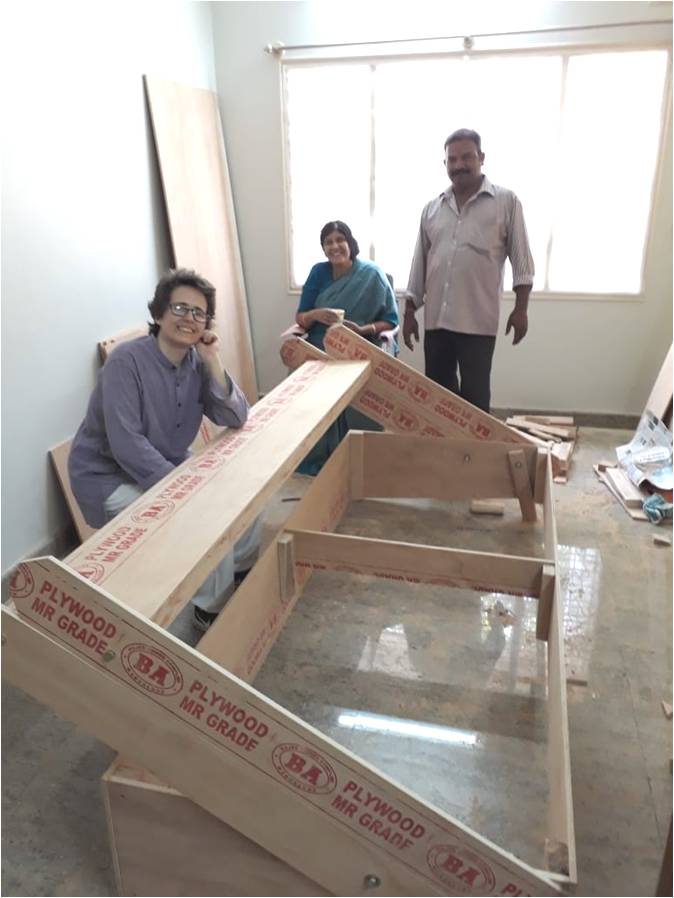Product Design is at the heart of Beacon AHEAD Institute. This makes Beacon AHEAD a fairly unique social development organization. We focus on developing new products that really help low-income communities to become more empowered, more healthy and more self-sufficient.
The ideal new product is one where the machine to make each product, as well as the product itself, are made in the community, from low-cost and readily available materials and tools. When these new eco-friendly products are:
- made by people in the village or slum, and
- used by people in the same local community,
- with the aim of improving quality of life, health, livelihood, etc.,
then that’s as perfect a success for us as batting six sixes in one over of cricket!
In our workshop, we make prototypes of new products, and we make tools and machines to make prototypes and products. Our workshop contains tools for working with wood and metal, and several prototypes.
These three short videos show some of our tools and prototypes –
We hold training workshops to teach people woodworking skills, so that they can build useful items, such as this space-saving, transforming furniture.
This transforming bed (below) will fit into small homes, and provide storage in the plywood drawers, shown below, and even turn into a desk during the day. All of the parts can be made with simple, straight cuts, and they are joined together with glue and eight bolts:


There are several steps involved in designing products:
- Research the needs of low-income people,
- Evaluate locally available materials and skills, and
- Incorporate appropriate technologies to develop affordable, high-value products.
- Develop new products that are desirable for local people to make, buy and use in order to empower people with sustainable livelihood opportunities.
- Ideally, these products help people to meet their basic needs of safety, shelter, sanitation, livelihood, etc.
- Where possible, we incorporate eco-friendly materials and processes into new products and their manufacturing.
We use Computer-Aided Design (CAD) software to help turn ideas into reasonable prototypes, and to create drawings for the parts and components of new products: